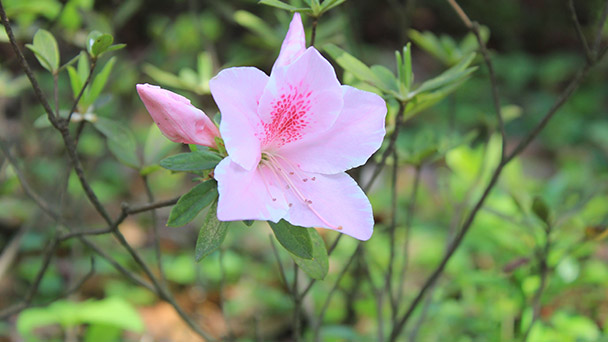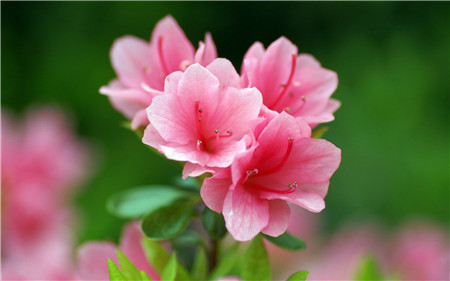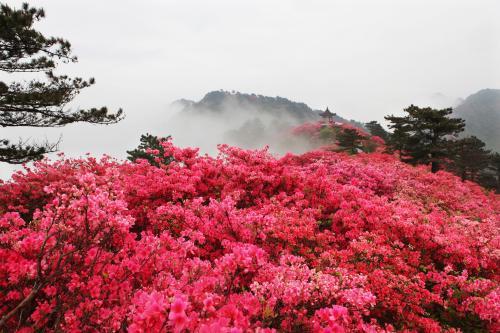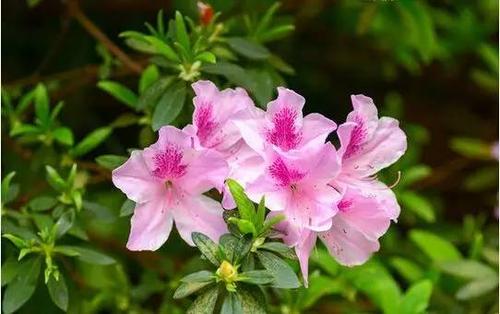Rhododendron simsii Planch profile
Written by Maggie
Aug 14 2021

Rhododendron simsii Planch. is an evergreen shrub of Dicotyledon, Rhododendron and Rhododendron. Born in mountainous shrubs or pine forests at an altitude of 500-1200 meters above sea level, Rhododendron simsii Planch. is a typical acid soil indicator plant in central and southwestern China.
Rhododendron simsii Planch. is native to East Asia and grows at an altitude of 500-2700 meters. Wild species are distributed in China, Japan, Laos, Myanmar and Thailand.
Rhododendron simsii Planch. picture

Rhododendron simsii Planch. Morphological characteristics
Rhododendron simsii Planch is a deciduous shrubs, 2-5 meters high; branches are many and slender, densely covered with bright brown flat and rough hairs. Leaves are leathery, often clustered with branch ends, ovate, elliptic-ovate or obovate or obovate to oblanceolate, 1.5-5 cm long, 0.5-3 cm wide, apex short and acuminate, base wedge or broad wedge, with slightly reversed edges Volume, with fine teeth, dark green on the top, sparsely shaggy hair, light white below, densely brown shaggy hair, midribs sunken on the top, protruding below; petiole 2-6 mm long.
Rhododendron simsii Planch.'s flower buds are ovoid, with rough hairs above the middle of the scales and eyelashes at the edges. Flowers 2-3clusters with branch tops; pedicel is 8 millimeters long, densely covered with bright brown scaly; calyx is 5-lobed, lobes triangular-shaped long ovate, 5 mm long, scaly, margin With eyelashes; corolla broad funnel-shaped, rose, bright red or dark red, 3.5-4 cm long, 1.5-2 cm wide, lobes 5, obovate, 2.5-3 cm long, upper lobes with dark red spots; stamens 10, The length is about the same as the corolla, the filaments are thread-like, and the middle part is puberulent; the ovary is ovoid, 10-loculed, densely covered with bright brown rough hairs, and the style extends beyond the corolla, and is glabrous.
Rhododendron simsii Planch. Capsule ovoid, up to 1 cm long, densely strigose; calyx persistent. Flowering period is from April to May, fruit period from June to August.
Rhododendron simsii Planch plant After years of cultivation, a large number of cultivars have appeared, with more colorful flowers and various flower shapes, including single and double petals.

Rhododendron simsii Planch. Growth environment
Rhododendron simsii Planch. Born in mountainous shrubs or pine forests at an altitude of 500-1200 (-2500) meters above sea level, it likes acidic soil and does not grow well in calcareous soil or even does not grow. Therefore, soil scientists often use rhododendron simsii Planch. as an indicator crop for acid soils. Rhododendron simsii Planch. rhododendron simsii planch likes a cool, humid, ventilated semi-shady environment. It is afraid of both extreme heat and cold. The suitable temperature for growth is 12°C to 25°C. If the summer temperature exceeds 35°C, new shoots and new leaves grow slowly and are in a semi-shade environment. Sleep state. Sun should be protected from the sun in summer and warm and cold in winter. Avoid scorching sun. It is suitable to grow under scattered light with low light intensity. If the light is too strong, the young leaves are easy to be burned, and the new leaves and old leaves are burnt. In severe cases, the plants will die. In winter, Rhododendron simsii Planch is cultivated in the open field. Measures must be taken to prevent cold to ensure its safe overwintering.
Rhododendron simsii Planch. Distribution range
Rhododendron simsii Planch is native to East Asia and distributed in China, Japan, Laos, Myanmar and Thailand.
Rhododendron simsii Planch is produced in China's Jiangsu, Anhui, Zhejiang, Jiangxi, Fujian, Taiwan, Hubei, Hunan, Guangdong, Guangxi, Sichuan, Guizhou and Yunnan.

Latest Updated
- Benefits of Bugleweed - 7 Science-backed Health Benefits
- Bugleweed Dangers & Side Effects - Is It Poisonous?
- How to Plant Evergreen Trees - What You Should Know
- When to Plant Evergreens - Grow Guide for Evergreen Trees
- 12 Wonderful Evergreen Shrubs for Your Garden
- 12 Popular Evergreen Plants with Pictures for Beginners
- When And How To Prune A Lilac Bush Like a Pro
- How to Grow & Care for Lilac Vine (Hardenbergia Violacea)
- Japanese Lilac Tree (Syringa Reticulata) Care & Propagation Guide
- Shumard Oak Pros and Cons - What to Know
Popular Articles
- Winter maintenance of Antirrhinum Majus
- How to Grow Terminalia Mantaly Tree
- How to Grow and Care for Crossostephium Chinense
- How to grow Antirrhinum Majus in spring
- Peristeria Elata (Dove Orchid) Profile: Info & Care Guide
- Underwatered Snake Plant (Sansevieria Trifasciata) - Signs And How To Fix
- How to Care for Brazilian Jasmine Plant (Mandevilla Sanderi)
- How to Grow & Care for Graptopetalum Purple Delight in Summer
- Rosa Chinensis (China Rose): Plant Growing & Care Tips
- How to Care for Baby Sun Rose (Aptenia Cordifolia)